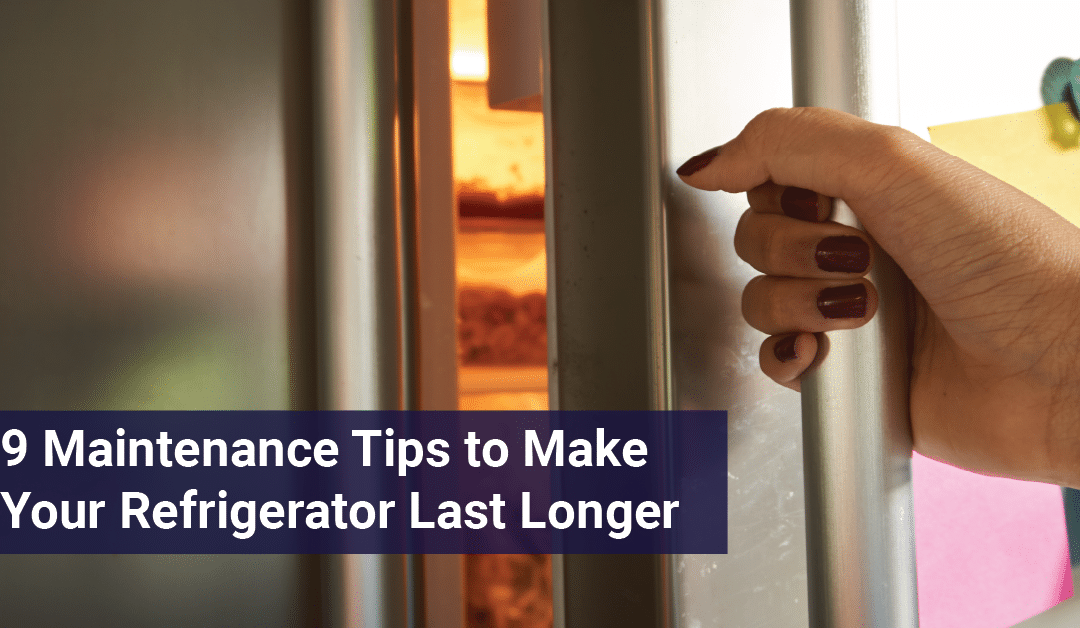Refrigerators are the workhorse of every kitchen. Aside from giving you ice-cold drinks when you need them, it also preserves food items to keep them edible for longer. What is amazing about this appliance is that it works 24/7 for your convenience.
Because of their strenuous workload, refrigerators are prone to damage and wear if not taken care of correctly. This article will give you tips on proper refrigerator maintenance to keep your fridge in good working condition for as long as possible.
1. Dust off condenser coils
The condenser coil radiates the heat absorbed by your fridge’s refrigerant gas to its rear. A thick coat of dust covering the condenser can hamper the heat exchange process of the freon and result in higher temperatures in your fridge, causing the compressor to overwork to compensate for the temperature change.
You can use a vacuum cleaner or soft brush to clean the condenser coil if the dust build-up is not severe enough. However, if a layer of grease and gunk has coated the condenser, you can spray the coil with a multipurpose cleaner to loosen up the grease.
2. Check the door gasket for gaps
The door gasket keeps cool air in and keeps warm air out. If the door gasket has weakened and formed a gap, the temperature balance inside the fridge can be off. To correct this imbalance, the refrigerator will have to work harder and will likely strain its compressor.
Door gaskets wear out and develop cracks over time. Get on top of this by occasionally checking your refrigerator’s gasket for damage and replacing it if it has any. You can also prolong the life of your gasket by wiping off any liquids and food residue on it to prevent corrosion and deterioration.
You can buy gaskets from Simplex for hassle-free delivery to your home. Simplex carries gaskets from various brands made from different kinds of materials that can suit your every need.
3. Avoid putting things on top of the fridge
It is common for people to put things on top of a fridge. After all, isn’t it free space? However, depending on the make and model of your refrigerator, it may not be able to support the weight of heavy items like microwaves or electric ovens. That may cause deformation on its body. Apart from that, objects like mats and towels can cause ventilation issues that throw your fridge’s temperature regulation off balance.
4. Give it ample ventilation space
Refrigerators need ample ventilation space around it to properly dissipate the heat it produces during operation, thus forcing the compressor to do harder work. Without sufficient ventilation, your fridge can wear out quicker.
To avoid this, most manufacturers state that a ventilation space of at least 50mm on each side and 100mm at the top and back of the fridge should be allotted to ensure proper heat transfer.
5. Keep your fridge away from direct sunlight and other heat sources
Refrigerators are covered with insulating materials to keep cold air from dissipating and warm air from affecting the temperature inside the fridge. However, strong sources of heat like stoves, ovens, and direct sunlight can still affect the temperature regulation of the fridge and cause the compressor to work overtime. Not only that, but your electricity bill will likely increase, too.
6. Defrost when needed
Some may interpret frost on the walls of the freezer as a good thing. After all, isn’t that what a freezer is for? However, frost that is too thick can interfere with the evaporator’s function of absorbing the heat in the freezer compartment.
A good rule of thumb is to defrost once frost thickness reaches ¼ – ½ in. Some freezers also have a small red light on one side of its wall to serve as a signal to defrost when it gets completely engulfed by frost.
7. Don’t use sharp objects to defrost
Defrosting a freezer entails waiting for most of the frost to melt until you can scrape it off. With that said, don’t use sharp objects like knives and ice picks to scrape the frost off the walls. These objects can easily puncture the evaporator coils tucked inside the freezer and cause its freon to leak. Instead, you can use the plastic scraper that comes with most refrigerators to speed up the defrosting process.
8. Be careful not to scratch or dent the fridge’s body
Scratches and dents along the body of the refrigerator are not a pretty sight to look at. But aside from being eyesores, these forms of damage can cause water molecules to get inside the metal body of the refrigerator, thus negating the protective coating designed to prevent corrosion.
9. Keep the drain holes clear
Refrigerators have drain holes in both the fridge and freezer section to usher melted frost and other liquids from the interior to the drain pan outside the refrigerator. Blocked drainage can cause the interior to flood and cause corrosion if not addressed immediately.
To clear the drainage hole, use a pipe cleaner and gently remove the blockage from the hole. If the freezer drainage is blocked, you should defrost it as ice may be the cause of the blockage. Additionally, you can pour a solution of vinegar and baking soda to dissolve blockages that stem from food residue and molds.
Final Message
Refrigerators are long-lived appliances, lasting for a decade and even more. And with proper care and maintenance, it can serve your family for generations to come.
While getting your refrigerator checked by a technician at least once a year is a good practice, you can do simple checks and maintain your fridge by yourself with the right equipment. When looking for high-quality industrial parts and materials for use in home repair and maintenance, Simplex has got you covered!
Visit our shop today to get started!

